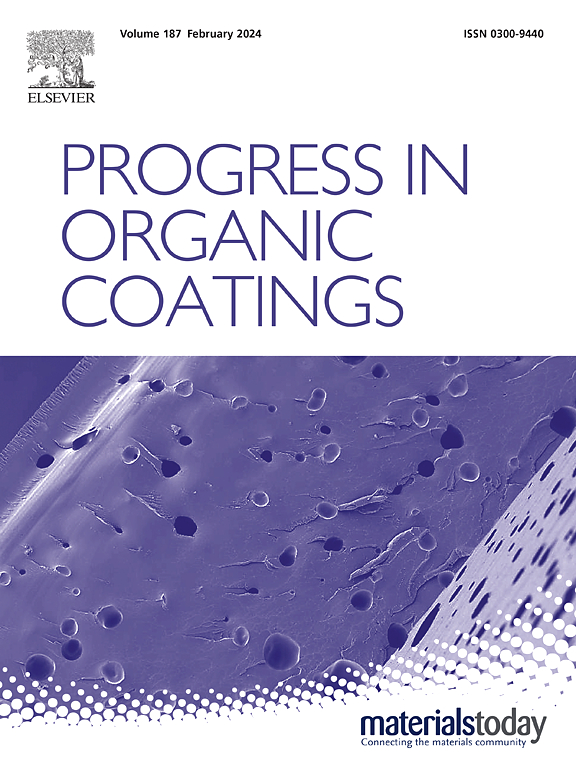Inhibition mechanism and warning performance of corrosion inhibitor and fluorescent indicator combinations on AA2024-T3
IF 6.5
2区 材料科学
Q1 CHEMISTRY, APPLIED
引用次数: 0
Abstract
To elucidate the inhibition mechanisms and determine the interaction concentration thresholds while ensuring effective corrosion warning, a systematic combination of corrosion inhibitors (BTA, 2-MBT, Ce(NO3)3, Na3VO4) and fluorescent agents (8-HQ, SA) was conducted at various concentrations. Based on the high-throughput microdroplet array test, contour plots illustrating the corrosion rates for various combinations of inhibitors and indicators were generated. The extensive region in the contour plots depicting a corrosion rates below 2 for BTA and 8-HQ combination highlights a pronounced synergistic corrosion inhibition effect, consistent with the Langmuir isotherm adsorption model and indicative of mixed adsorption behavior. In contrast, the SA and 8-HQ mixture demonstrates a significant antagonistic effect in certain ratios, aligning more closely with the Frumkin adsorption model due to the strong intermolecular interactions facilitated by hydrogen bonding. Across the whole range of concentrations, the combination of 0.8 mM BTA and 2 mM 8-HQ achieves a synergism factor that significantly exceeding 1, along with the exceptional corrosion inhibition efficiency of up to 99.37 %. This remarkable performance is associated with a maximum binding energy of 157.17 kcal/mol, primarily attributed to the enhanced adsorption of 8-HQ facilitated by BTA. Moreover, this combination exhibited a strong fluorescence response and high sensitivity for dipping corrosion monitoring, making it an ideal choice for both corrosion protection and warning in 2024-T3 aluminum alloy.
求助全文
约1分钟内获得全文
求助全文
来源期刊

Progress in Organic Coatings
工程技术-材料科学:膜
CiteScore
11.40
自引率
15.20%
发文量
577
审稿时长
48 days
期刊介绍:
The aim of this international journal is to analyse and publicise the progress and current state of knowledge in the field of organic coatings and related materials. The Editors and the Editorial Board members will solicit both review and research papers from academic and industrial scientists who are actively engaged in research and development or, in the case of review papers, have extensive experience in the subject to be reviewed. Unsolicited manuscripts will be accepted if they meet the journal''s requirements. The journal publishes papers dealing with such subjects as:
• Chemical, physical and technological properties of organic coatings and related materials
• Problems and methods of preparation, manufacture and application of these materials
• Performance, testing and analysis.
 求助内容:
求助内容: 应助结果提醒方式:
应助结果提醒方式:


